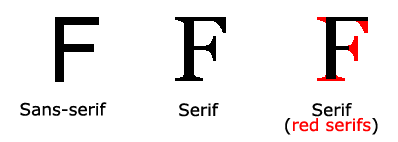This site is 📱 accessible. Tap here to use the mobile stylesheet.
4.2 CSS Font
Choosing the right font for your website is important!
Font Selection is Important
Choosing the right font has a huge impact on how the readers experience a website. The right font can create a strong identity for your brand. Using a font that is easy to read are important. The font adds value to your text. It is also important to choose the correct color and text size for the font.
Generic Font Families
In CSS there are five generic font families:
- Serif fonts have a small stroke at the edges of each letter. They create a sense of formality and elegance.
- Sans-serif fonts have clean lines (no small strokes attached). They create a modern and minimalistic look.
- Monospace fonts - here all the letters have the same fixed width. They create a mechanical look.
- Cursive fonts imitate human handwriting.
- Fantasy fonts are decorative/playful fonts.
All the different font names belong to one of the generic font families.
Difference Between Serif and Sans-serif Fonts

Note: On computer screens, sans-serif fonts are considered easier to read than serif fonts.
Some Font Examples
Times New Roman
| Generic Font Family | Examples of Font Names |
|---|---|
| Serif | Times New Roman, Georgia, Garamond |
| Sans-serif | Arial, Verdana, Helvetica |
| Monospace | Courier New, Lucida Console, Monaco |
| Cursive | Brush Script MT, Lucida Handwriting |
| Fantasy | Copperplate, Papyrus |
The CSS font-family Property
In CSS, we use the font-family property to specify the font of a text. The font-family property should hold several font names as a "fallback" system, to ensure maximum compatibility between browsers/operating systems. Start with the font you want, and end with a generic family (to let the browser pick a similar font in the generic family, if no other fonts are available). The font names should be separated with comma.
Note: If the font name is more than one word, it must be in quotation marks, like: "Times New Roman".
Example
Specify some different fonts for three paragraphs:
.p1 {
font-family: "Times New Roman", Times, serif;
}
.p2 {
font-family: Arial, Helvetica, sans-serif;
}
.p3 {
font-family: "Lucida Console", "Courier New",
monospace;
}